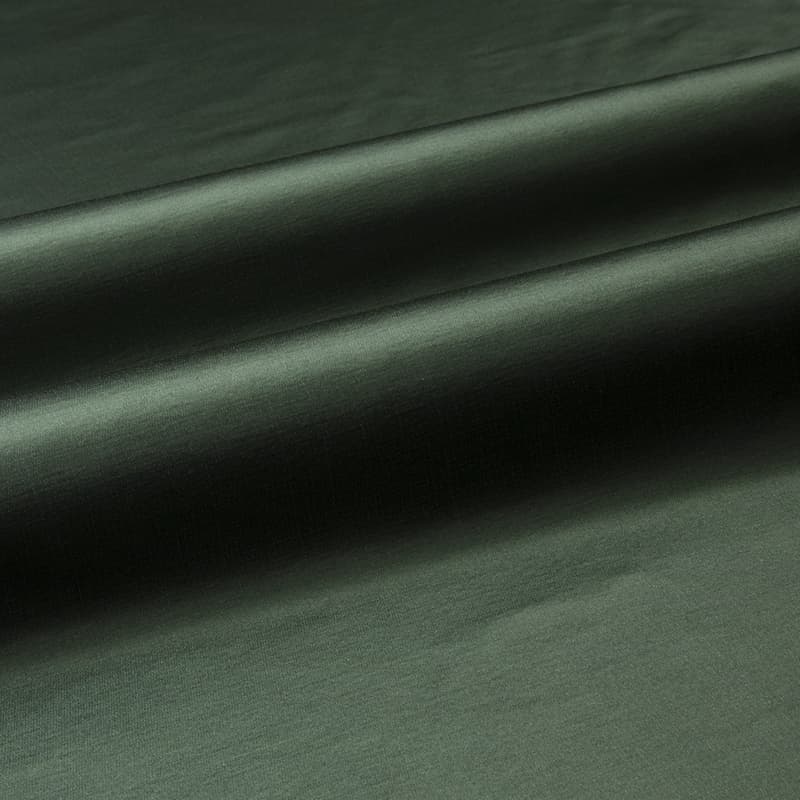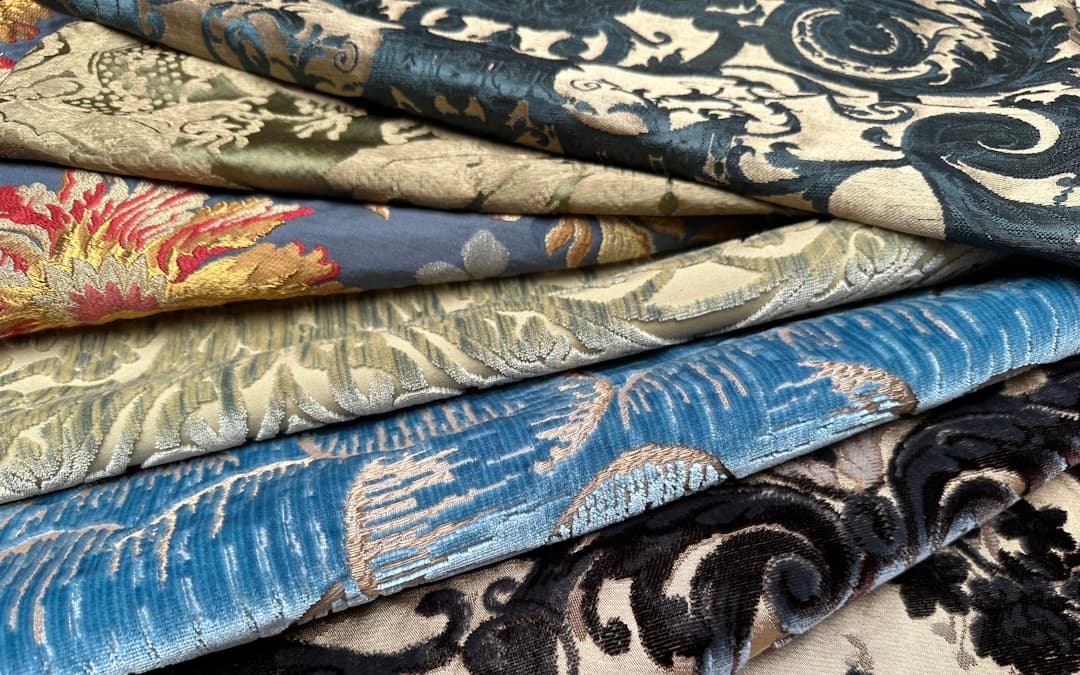In the world of textiles, the word “luxury” evokes images of elegance, refinement and craftsmanship. Luxury fabrics are more than just materials: they are textile works of art that enchant with their beauty and history. In this article, we will explore the wonderful world of fine fabrics, discovering their names and the characteristics that make them so unique.
Produced by the Tessitura Bevilacqua since 1875, these fabrics are intended for furniture and clothing, combining traditional craftsmanship with the timeless beauty of high-quality textiles. From handmade creations using ancient 18th-century looms to decorative motifs that span the centuries, we will immerse ourselves in a universe of poetry, beauty and extraordinary craftsmanship.
Velvet
Velvet is a fabric of ancient Oriental origin of which Venice, between the 15th and 17th centuries, was one of the main centers of production, at that time reserved for the residences and clothes of the most privileged social classes. Its special processing allows for the characteristic dense pile, which is extremely soft to the touch. Its natural luster and unparalleled brilliance of color result from the reflection of light on the surface of the pile. It is an opulent and versatile fabric that can be made using a variety of materials, including cotton, silk, viscose, and even synthetics such as polyester. The choice of materials will affect the specific characteristics of the velvet, such as luster and softness.
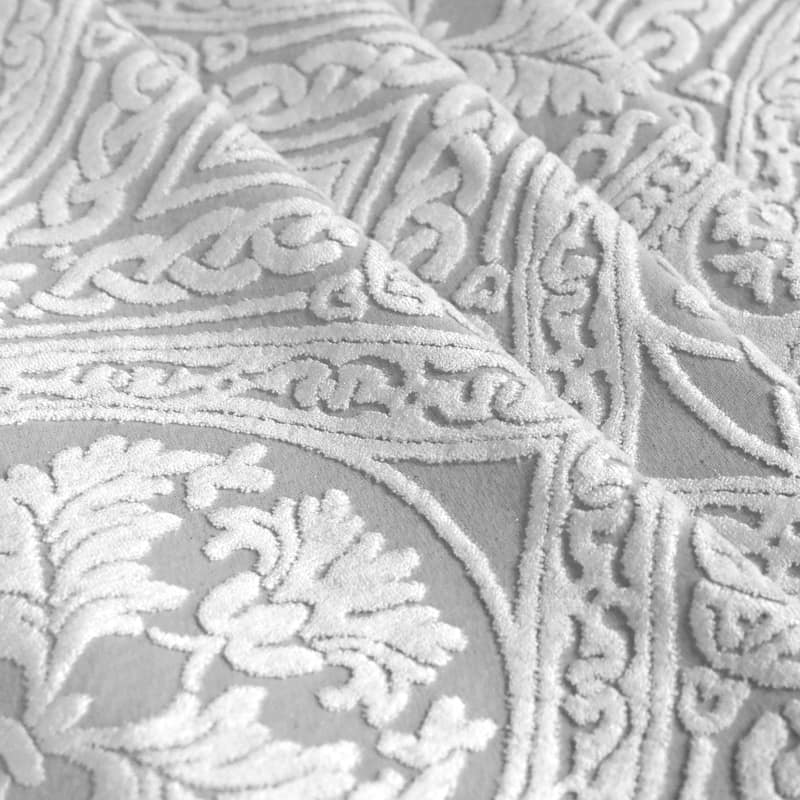
Handmade Velvet
The most precious and exclusive of our fabrics because of its beauty and complex workmanship, which still uses original 18th-century looms. Included in this category is soprarizzo or cesellato velvet, the rarest and most prized of hand velvets because it is the fruit of an ancient art carried on by very few weavers in the world. The process to make it is very slow and elaborate, resulting in designs that combine curly and cut velvet, on which light reflects differently, creating extraordinary chiaroscuro and depth effects that give the design three-dimensionality.
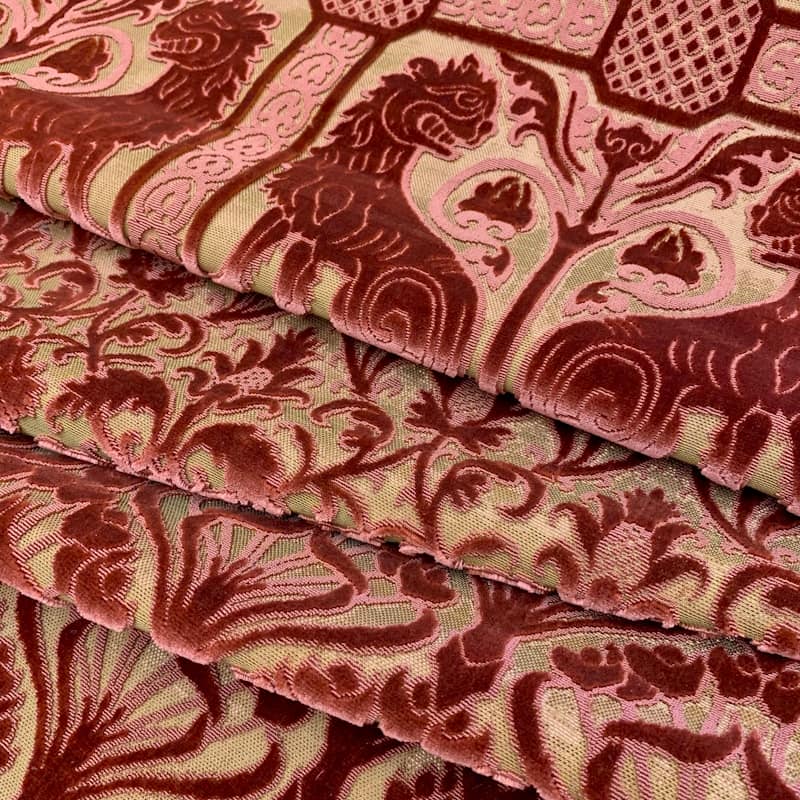
Animalier velvet
These velvets feature animalier patterns, an evergreen in the world of fashion and interior design, because they lend style and great personality to any setting. In the past, animalier patterns, symbols of power, honor and wealth, were known as Zoote. During the 18th century, they became extraordinarily popular and were widely used in the creation of fine fabrics. Today, these patterns are reinterpreted in our velvets with a contemporary twist, incorporating innovative colors that add a fresh, modern touch to the traditional animalier motif. Animalier velvets are incredibly versatile, making them the perfect choice for an array of applications, spanning from fashion to interior design. These sumptuous textiles empower individuals to convey their distinct personality and style with an exquisite and sophisticated flair.
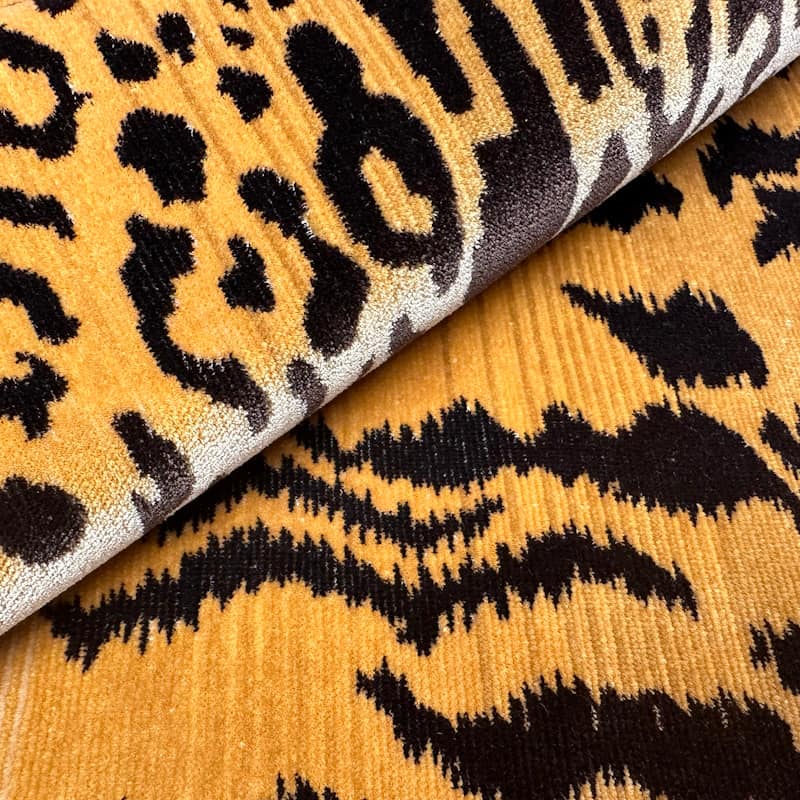
Multicolored velvet
These beautiful velvets with polychrome designs of rare beauty and rich in detail are born from very complex workmanship. Shapes and colors are combined with great harmony and stand out against backgrounds in neutral tones. The most famous are the “Jardinière”- garden – velvets, with elaborate floral motifs, which had their heyday in the seventeenth century and are still chosen for luxury interior decoration and other products that require a touch of elegance and refinement.
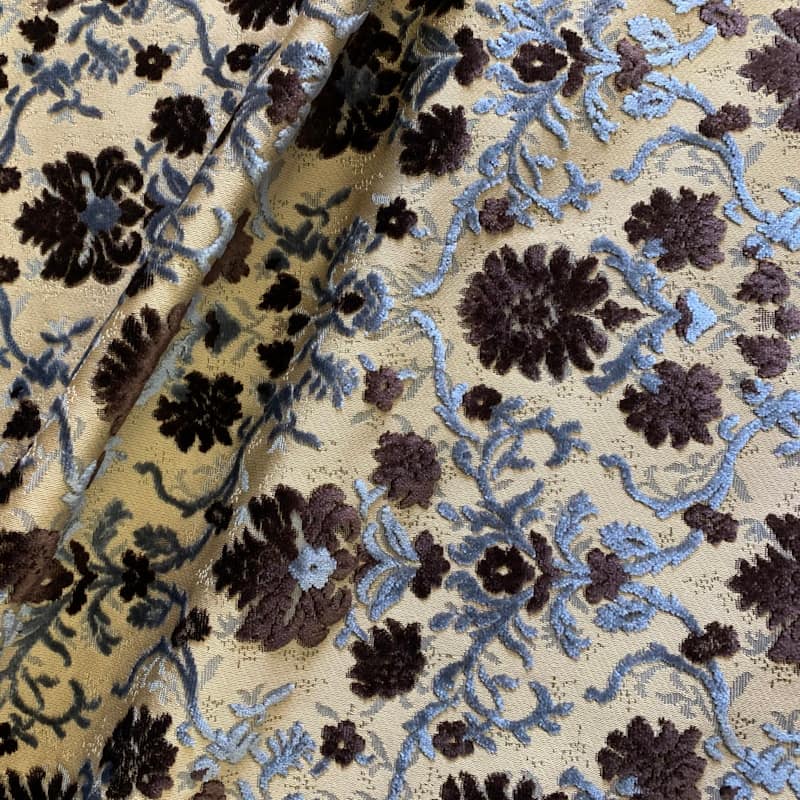
Heddle velvet
The name of this velvet derives from the processing that requires the use of special rods to produce its typical pile, allowing the creation of a wide range of decorative patterns using multiple colors. Whether used for luxury clothing or to embellish interiors, heddle velvet is an extraordinarily charming and versatile fabric with a touch of elegance and originality that does not go unnoticed.
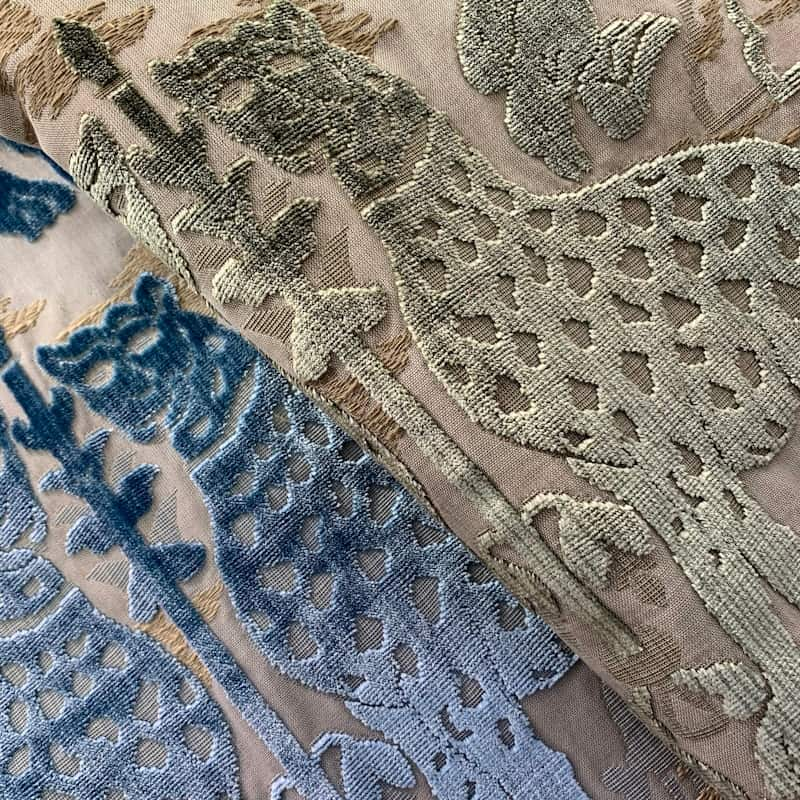
Damask
Damask is a magnificent light, silky, textured fabric with iridescent luminosity. The designs are richly detailed and stand out shiny against the matte background, or vice versa, due to the different way light reflects off the yarn. It is a reversible fabric, because the pattern is visible on both the obverse and reverse, but shiny and matte parts are opposite, as in the negative of a photo. Of Oriental origin, it had a great development in the city of Damascus, from which it took its name, and was mainly used for the furnishings of noble palaces and sacred vestments, also embellished with gold and silver thread decorations.
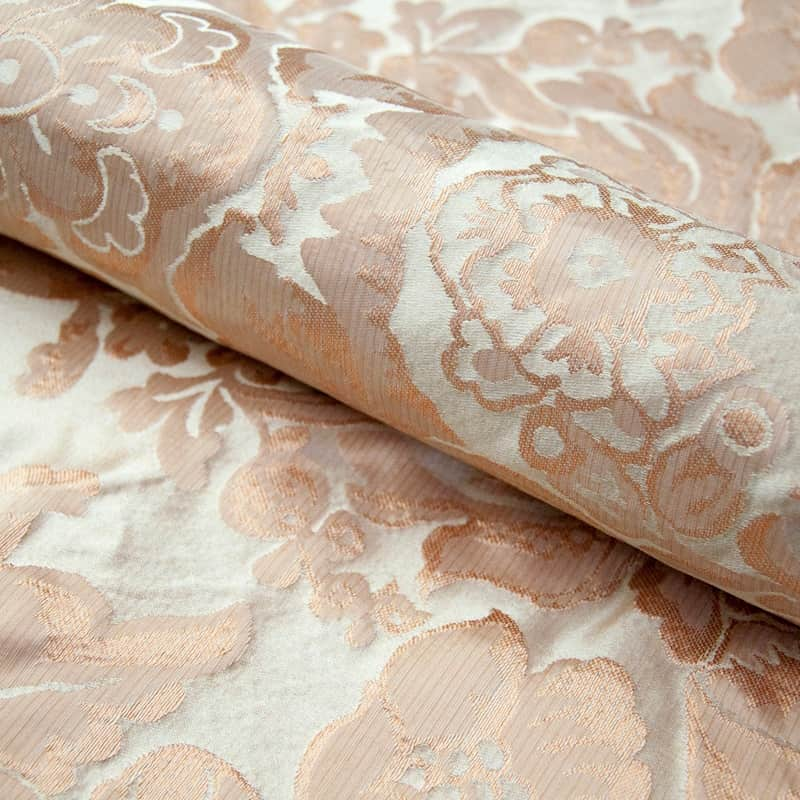
Lampas
Lampas is a precious woven fabric of ancient Oriental origin. Its complex warp and weft structure allows for large patterns with a three-dimensional effect that stand out sharply against the background. Often embellished with gold or silver threads, it became widespread in the Renaissance and throughout the Baroque period. In the second half of the 1500s it became the fabric of choice for clothing, but today it is used in furniture (upholstery, curtains, luxury wall hangings) and for ecclesiastical vestments.
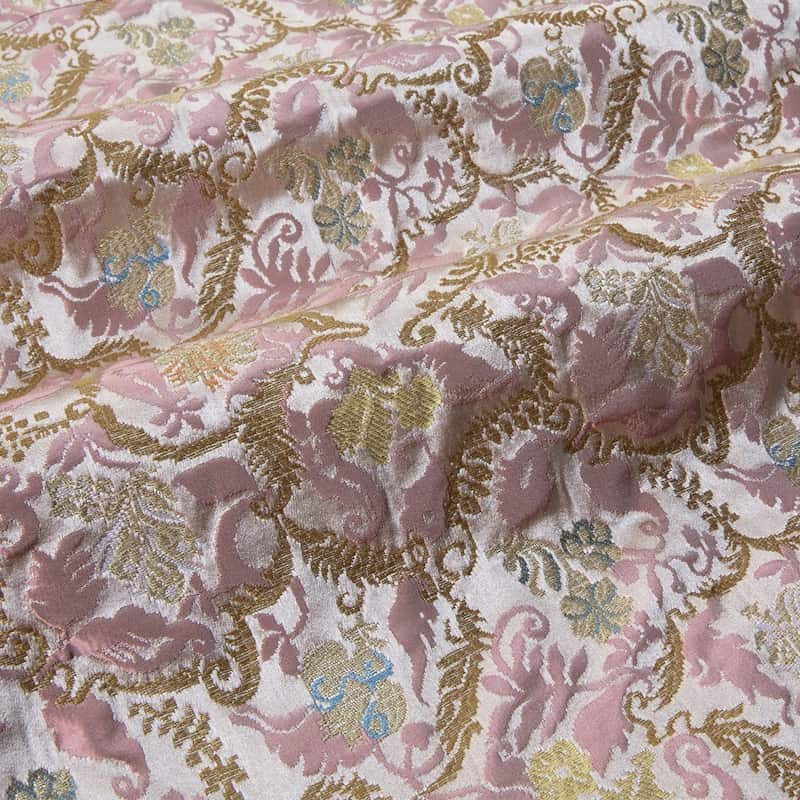
Brocatelle
Brocatelle is a fine fabric distinguished by its elaborate raised patterns. The distinctive feature of this fabric is the juxtaposition of stiff wefts, usually made of hemp or linen, and lighter silk warps. This combination creates a textile surface with three-dimensional decorative patterns, giving brocatelle a unique elegance. Lighter than brocade, it has been used since the 16th century in luxury furnishings, upholstery and sacred vestments.
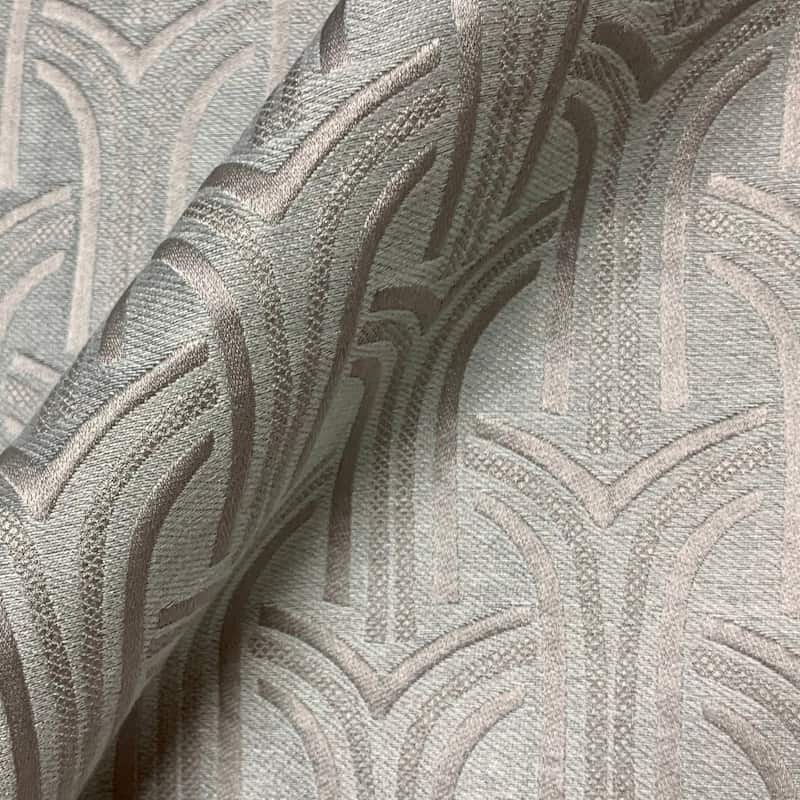
Satin
This is a precious silk fabric with extreme luster and is incredibly smooth and light to the touch. What makes it so lustrous and uniform is its weave, which is how the warp threads intertwine with the weft threads, also used to make textured fabrics such as damask and lampas. Satin has no patterns and its reverse side is opaque. Its ancient origins are Chinese and it was not until the Middle Ages that it began to be produced in Italy. Much loved by the more privileged classes for clothing and furnishings, it was also chosen by King Louis XIV for the upholstery of the furnishings of the Palace of Versailles.
